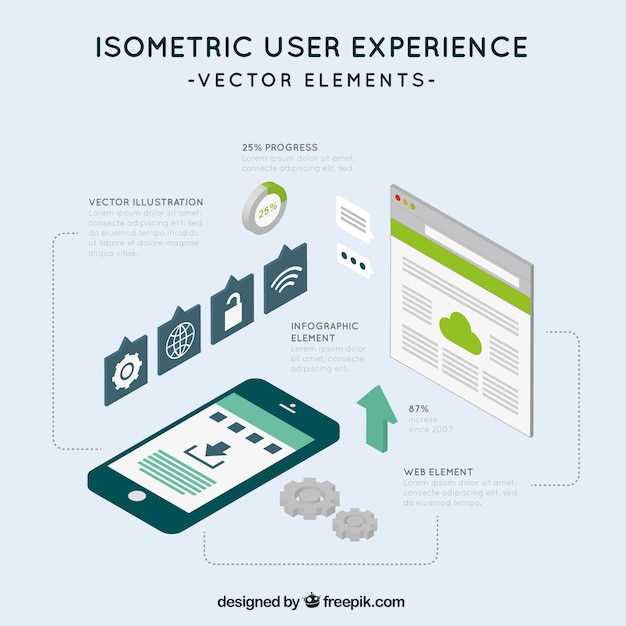The landscape of creating software for smartphones is vast and intricate. Numerous factors influence the total expenditure involved. It’s essential to grasp these elements clearly. Many aspiring creators often overlook specific details that can significantly affect their spending. The journey to bring an idea to life often comes with unexpected hurdles.
Each element, from design to execution, requires careful consideration. While some may assume that estimating financial requirements is straightforward, the reality tends to be different. Different aspects contribute to a fluctuating financial commitment, making it vital to analyze every stage of the process. Not only does this ensure that expectations align with reality, but it also empowers creators to make informed decisions.
Planning involves much more than just initial costs; it encompasses a range of ongoing expenses. Regular updates, maintenance, and user support also factor into the overall picture. Recognizing these elements from the beginning can save significant stress and resources later. As this exploration unfolds, we will delve into specific components that influence overall pricing and how one can effectively navigate these complexities.
Understanding the details allows for smarter choices and more efficient use of resources. From team selection to technology stack, every decision adds up. Each choice ripples through the entire venture, impacting timeframes and final results. By anticipating future obstacles and planning accordingly, one can create a robust foundation for success, ensuring the idea thrives in a competitive market.
Understanding Mobile App Development Costs

Building a digital solution involves various factors that significantly influence the financial aspect. Each decision made during the processes can lead to unexpected expenses or savings. The overall investment may not always be straightforward. Think about what’s necessary for success. It’s essential to grasp the many elements at play.
For starters, the scope of functionalities will affect the final expenditure. More features typically mean more development time, which can increase costs substantially. Additionally, the choice of platforms plays a crucial role. Developing for iOS alone differs from targeting both iOS and Android.
Moreover, the technology stack utilized is also vital in this equation. Some frameworks may prove more economical, while others can elevate the price greatly. When hiring a team, their geographical location can impact charges. Regions with a high cost of living often result in higher hourly rates.
Lastly, consider the importance of design and user experience. A well-crafted interface can draw users in and keep them engaged. Conversely, overlooking this aspect may lead to poor user retention. Ultimately, every element from planning to launch contributes to the total financial commitment.
Key Factors Affecting App Development Expenses

Creating a digital solution involves various elements that impact financial requirements. Each decision made can lead to different outcomes. Factors can range from technical requirements to team expertise and timeframes. Understanding these variables is essential for anyone embarking on such an endeavor.
First and foremost, the complexity of features plays a significant role. Simple functions will naturally require less investment than intricate ones. Additionally, the choice of platform–iOS, Android, or both–adds another layer of financial implications. The skill level of the developers chosen also greatly influences overall spending.
Project management practices cannot be overlooked, as they dictate efficiency and resource allocation. Furthermore, geographical location of your team might lead to variations in pricing structures. A well-established firm in a major city may demand higher rates than a startup in a less populated area.
Moreover, ongoing support and maintenance create a long-term financial commitment that should not be disregarded. When evaluating options, it’s crucial to consider these expenses in the grand scheme of your plans. A feature-rich interface or complex functionalities will necessitate more extensive testing and updates down the line.
Project Scope and Complexity
Defining the extent and intricacy of a digital solution significantly impacts the overall journey. It lays the foundation for everything that follows. A well-structured outline will help steer the entire process in the right direction. Without clarity, unforeseen challenges may arise.
Factors influencing the level of difficulty include:
- Features and functionalities
- User interface design
- Integration with existing systems
- Platform compatibility
- Scalability options
Each element adds layers of complexity. A simple interface may require minimal resources, while advanced features demand substantial input. Moreover, how the components interact can complicate matters. The more extensive the functionality, the higher the level of expertise needed.
- Feature-rich solutions often entail intricate back-end architecture.
- User engagement plays a crucial role in design choices.
- Integration with third-party services may introduce additional hurdles.
Ultimately, a clear understanding of the scope is essential to streamline workflows and allocate resources efficiently, ensuring that developers and stakeholders are aligned at every stage. It’s the cornerstone of successful outcomes, allowing for smooth transitions between each development phase without unexpected detours. Each decision made regarding the project’s layout and expectations will directly influence timeframes and expenses.
Technology Stack and Platform Choice
Choosing the right technology stack and platform is crucial for any software initiative. This decision impacts performance, scalability, and user experience. Various elements come into play here. Each choice carries its implications. A well-considered selection of tools can lead to a smooth workflow.
First, you need to determine the target audience. Is it iOS, Android, or both? Each platform has its own ecosystem and requirements. Understanding these can enhance user satisfaction. Moreover, development efforts can be more efficiently allocated.
- iOS: Apple’s ecosystem, known for its quality and security.
- Android: A vast market with diverse devices.
- Cross-platform: Reach multiple platforms with a single codebase.
The technology stack you choose will directly influence the efficiency of your team. Frameworks, languages, and tools must be evaluated based on project requirements. For instance, React Native offers a balanced approach if you’re looking for cross-platform compatibility.
- Assess business objectives.
- Analyze user needs and behaviors.
- Pick the platform that aligns with your goals.
Investing time in this selection can save resources later on. The technology choices should align with long-term vision. Ultimately, a well-planned architecture provides a solid foundation for future growth. Each decision you make will shape the overall trajectory of the initiative.
Development Team Location
The geographical placement of your team can significantly influence the overall investment. Different regions have varying rates and talent pools. This can affect timelines and quality. Hence, choosing a location is a vital step.
Consider the following factors when assessing team location:
- Cost of Living: Areas with lower costs often provide affordable services.
- Time Zone Differences: Proximity can ease communication, affecting the workflow.
- Talent Availability: Some regions are hubs for skilled individuals in tech.
- Cultural Preferences: Understanding local customs can enhance collaboration.
For instance, hiring a team in Eastern Europe might offer competitive prices with excellent quality. Conversely, teams in North America may come with higher fees but potentially superior project management practices. When you factor in communication and time zone adjustments, the choice of location becomes even more critical. Ultimately, aligning project goals with the appropriate regional expertise can lead to greater efficiency and satisfaction.
Assessing your project’s unique needs will guide you in selecting the ideal team setting. With diverse options globally, it’s essential to weigh all these considerations carefully.
Timeline and Delivery Schedule
Planning the timeline and delivery schedule is crucial for any endeavor in the digital realm. It sets the pace and defines expectations. Clear milestones help in tracking progress effectively. A well-thought-out schedule can enhance team coordination.
The timeline typically depends on various elements such as complexity, features, and resources. For instance, a simple initiative may require a few weeks, whereas a more sophisticated solution can take several months to refine. The iterative nature of the process allows for adjustments and improvements along the way.
Communication is key during this phase. Regular updates keep everyone aligned and informed. It’s essential to be flexible yet focused on the end goals. Setting deadlines creates a sense of urgency and motivates teams to meet targets.
In addition, the delivery schedule often includes phases like planning, design, coding, and testing, each contributing to the overall success of the venture. This structure not only keeps the project on track but also facilitates feedback, ensuring that the final result meets the intended vision without compromising quality.
Choosing the Right Development Approach

When embarking on a new application initiative, selecting the most suitable methodology is crucial. It sets the tone for the entire process. Different methodologies have distinct advantages and limitations. Thus, it’s imperative to assess your unique requirements thoroughly. This choice could significantly influence both the timeline and the quality of the final product.
There are several routes to consider, including native, hybrid, and web-based options. Each method serves various purposes and user expectations. Native applications provide superior performance and are tailored for specific operating systems. Conversely, hybrid solutions offer flexibility and faster deployment, but may sacrifice some functionality.
In addition, web-based platforms can be cost-effective and accessible on multiple devices. However, they often lack the features of their native counterparts. The decision-making process should involve your target audience and the specific goals you wish to achieve. An informed selection can enhance user experience and drive engagement.
Ultimately, the right approach depends on factors such as budget constraints, desired functionality, and timelines. Engaging with experienced professionals for insights can also provide clarity. Balancing these considerations will pave the way for a successful outcome.
Freelancers vs. Development Agencies
When deciding who to hire for a tech initiative, the choice often narrows down to two main options: independent contractors or specialized firms. Each has distinct strengths and weaknesses. Freelancers typically offer flexibility and affordability. On the other hand, agencies provide structured processes and a team environment.
Working with freelancers can be a fantastic choice for smaller projects. They deliver personalized attention and may adapt more readily to changing requirements. However, this flexibility can come with risks. A single freelancer may lack certain expertise, leading to potential gaps in the project’s execution.
Agencies, in contrast, bring a wealth of experience and a diverse skill set to the table. They usually have teams that cover different aspects of a job, such as design, coding, and marketing. This collective expertise can result in a more polished final product. Furthermore, established agencies often have a proven record of success.
While freelancers might seem more cost-effective initially, agencies often prove to be a more reliable long-term investment. Their structured approach minimizes the risk of miscommunication and ensures that deadlines are met consistently.
Ultimately, the decision between freelancers and agencies depends on the specific needs and scope of the endeavor. It’s crucial to weigh the pros and cons carefully before committing to one path or the other.
Benefits of Outsourcing Your Project
Entrusting your undertaking to external specialists can yield remarkable advantages. It allows access to talent that may not be available locally. This option often leads to considerable cost savings as well. Additionally, it frees up internal resources to focus on core activities. The flexibility of working with various teams is also a significant asset.
By leveraging global expertise, you can enhance quality and innovation in your project. Remote teams often bring diverse perspectives that can enrich your concept. They can help accelerate timelines while maintaining high standards. A partnership with skilled professionals fosters a collaborative environment that drives success. This synergy can be pivotal, especially in competitive markets.
| Advantages | Description |
|---|---|
| Cost Efficiency | Outsourcing can significantly lower expenses compared to local hiring. |
| Access to Talent | Work with experts from around the globe who specialize in your needs. |
| Focus on Core Activities | Free up your team to concentrate on primary business functions. |
| Flexibility | Easily scale your workforce as requirements change and evolve. |
| Time Savings | Rapidly tap into external resources to speed up project timelines. |
Overall, making the decision to hand over specific aspects of your undertaking to external providers can lead to a multitude of strategic advantages, which ultimately empowers you to enhance efficiency while fostering innovation and creativity in your overall vision.
Best Practices for Budget Management
Managing finances effectively is crucial in any venture. Without proper oversight, expenses can spiral out of control. Adopting sound strategies will help maintain alignment with financial goals. It’s all about being proactive and staying informed. By following best practices, stakeholders can navigate the complexities of funding.
Start by defining clear financial objectives. Knowing what you want to achieve is essential. Next, create a detailed plan covering all aspects. This will serve as a roadmap. Regularly reviewing this plan ensures that adjustments can be made promptly.
| Practice | Description |
|---|---|
| Set Realistic Goals | Aim for achievable financial targets to guide progress. |
| Maintain Transparency | Share financial information with all relevant parties. |
| Monitor Expenses | Keep a close eye on spending to identify potential overruns. |
| Adjust Accordingly | Be flexible and ready to make changes as needed. |
| Engage Experts | Consult with professionals for better financial insight. |
Lastly, implementing a tracking system proves beneficial over time; this allows you to identify trends and anomalies in spending, creating opportunities for cost-saving measures and enhancing overall financial performance. Adopting these methods can lead to a smoother experience, helping you to avoid pitfalls along your journey.
Video:
How Much Does It Cost To Build An App? App Development Cost Breakdown
How Much Does It Cost To Build An App? App Development Cost Breakdown by Adrian Ching 6,233 views 2 years ago 16 minutes
Q&A:
What are the main factors influencing mobile app development costs?
The cost of mobile app development can vary significantly depending on several key factors. Firstly, the complexity of the app plays a crucial role; simple apps with basic features will cost less compared to more complex apps with advanced functionalities. Secondly, the platform you choose—whether iOS, Android, or both—affects costs, with cross-platform development typically being more expensive due to the need for specialized skills. Thirdly, the geographical location of the development team can impact pricing, as rates differ significantly from region to region. Additionally, the development approach (native vs. hybrid), design requirements, third-party integrations, and ongoing maintenance also contribute to the overall budget. Understanding these factors will help you create a more accurate budget for your project.
How can I estimate the budget for my mobile app project?
Estimating a budget for your mobile app project involves several steps. Start by clearly defining your app’s purpose and identifying its target audience, which will help you determine essential features and functionality. Next, research similar apps to understand their cost ranges, as this can provide valuable benchmarks. Engage with potential development teams to discuss your project; they can offer insights into the pricing structure based on your requirements. Additionally, factor in costs beyond development—like design, testing, marketing, and post-launch support. A rough estimate can initially be created by multiplying the expected development hours by the hourly rate of your chosen development team. This rough estimate should, however, be adjusted as you refine your project details and receive more precise quotes.
What are some hidden costs I should be aware of in mobile app development?
When budgeting for mobile app development, it’s essential to consider hidden costs that can emerge throughout the process. These may include expenses for app design, which could be more significant than anticipated if you aim for a user-friendly and engaging interface. Additionally, fees for backend development, server costs, and third-party service integrations can add up quickly. Don’t forget about costs related to app store registration, which usually requires a fee for both the Apple App Store and Google Play. Post-launch, you should budget for app maintenance and updates, as user feedback may necessitate changes or improvements. Marketing and advertising costs to promote your app after launch can also be substantial. By anticipating these hidden costs, you can create a more realistic budget.
Is it possible to develop a mobile app on a tight budget without compromising quality?
Developing a mobile app on a tight budget is challenging but possible, especially by optimizing your approach. Start by prioritizing core features that provide the most value to users, and consider creating a minimum viable product (MVP) that includes only essential functionalities. This allows you to test the market without extensive investment. Additionally, you might consider leveraging low-code or no-code platforms, which can speed up development and reduce costs, although they may not offer the same level of customization. Engaging freelancers or smaller development agencies, rather than larger firms, can also be more budget-friendly. Lastly, don’t underestimate the power of iterative development, where you launch with basic features and enhance the app over time based on user feedback. This way, you stay within budget while still delivering a quality product that meets user needs.




